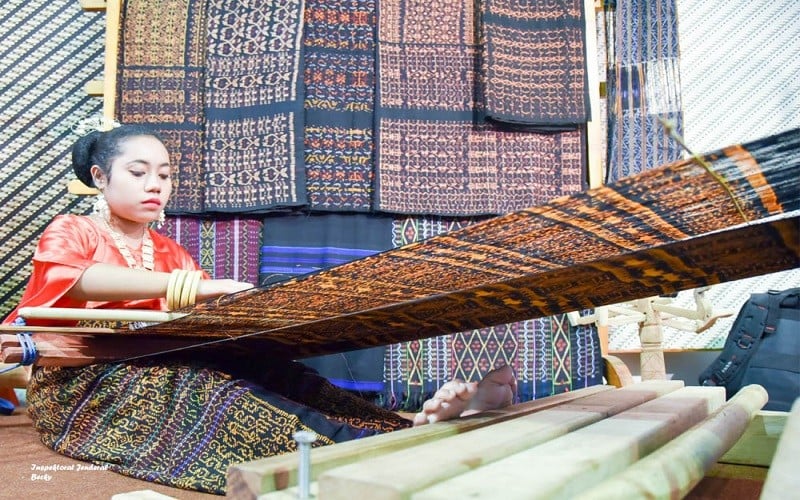In the lush highlands of North Sumatra, the Karo people weave more than fabric—they weave stories of identity, resilience, and spirituality. Yet few realize that this traditional cloth has also found a meaningful place within the santri world. Beyond its vibrant colors and intricate geometric patterns, Karo cloth embodies values that resonate deeply with Islamic teachings.
Weaving Identity: A Sense of Belonging and Connection

For many santri, Karo cloth is more than just material; it is a symbol of history, dignity, and quiet resistance against injustice. Honoring such textiles can be considered a form of dakwah bil hal (preaching by example)—a way of living Islamic values while upholding adat (customary tradition).
The geometric motifs common in Karo textiles reflect not only artistic heritage but also spiritual principles. The patience (sabr) required in the weaving process mirrors the perseverance of santri in their pursuit of deeper faith. These interlaced patterns symbolize ukhuwah (brotherhood), echoing the Qur’anic command to “hold firmly to the rope of Allah” (QS. Ali Imran: 103).
Historically, during Dutch colonial rule, the Karo people used this cloth to blend in while preserving their cultural identity. Similarly, santri today may face skepticism when wearing adat-inspired clothing, yet they persist in maintaining authenticity—honoring both their faith and heritage.
For santri of Karo descent, wearing Karo cloth reaffirms a dual identity: pride in their lineage and grounding in Islam. This textile is not a contradiction but a convergence of cultural pride and spiritual devotion. As one Karo santri expressed, “The threads strengthen the fabric just as faith strengthens my identity.” Through this lens, Karo cloth becomes spiritual armor—rooted in the past yet oriented toward a faithful future.
Beyond Uniforms: Preserving Heritage Through Education
Incorporating Karo cloth into santri uniforms is only the beginning. Pesantren could further enrich this connection by introducing arts and crafts classes focused on Karo textile design and weaving techniques. These hands-on sessions would preserve traditional skills while instilling values like patience and attention to detail.
Such initiatives would also deepen santri’s appreciation of their heritage, fostering intergenerational dialogue with elder Karo weavers who can pass down both stories and skills. This educational approach strengthens community ties and ensures the cultural sustainability of Karo weaving for years to come.
Embracing Diversity: Clarifying Culture and Faith
While many embrace Karo cloth’s inclusion in Islamic settings, some question whether it dilutes Islam’s universal message. Critics argue that emphasizing ethnic identity risks veering into ghuluw (excess). Yet Islamic teachings celebrate diversity: “We made you into nations and tribes so that you may know one another” (QS. Al-Hujurat: 13).
Islam encourages modest and dignified attire (Sunan Abu Dawud), and scholars affirm that traditional textiles—when aligned with modesty and respect—fall under urf (local customs accepted by Islamic law). Rather than creating conflict, Karo cloth reflects Allah’s creativity and the beauty of cultural expression within the bounds of faith.
Future Threads: Santripreneurs and a Sustainable Legacy
Today, Karo weavers face threats from fast fashion and industrialized textile production. Ironically, a solution may lie with the santri themselves. Santripreneurs are finding innovative ways to market Karo cloth as modest fashion—transforming it into hijabs, tunics, and garments that honor heritage while aligning with Islamic values.
By adapting traditional designs into modern forms, these young entrepreneurs prove that sustainability and spirituality can be woven together. In doing so, they ensure that the legacy of Karo cloth—and the identity it carries—continues to inspire future generations.









